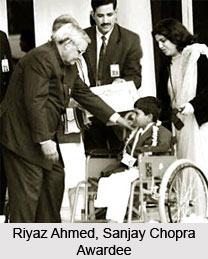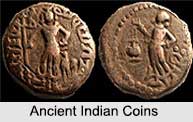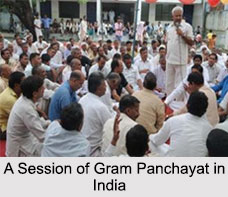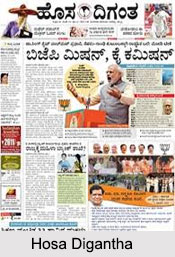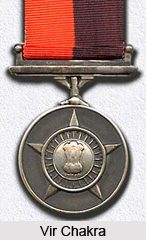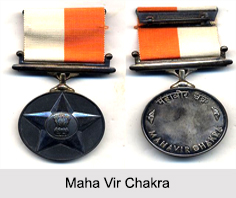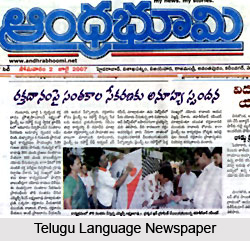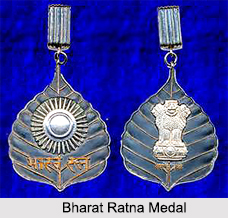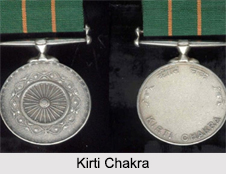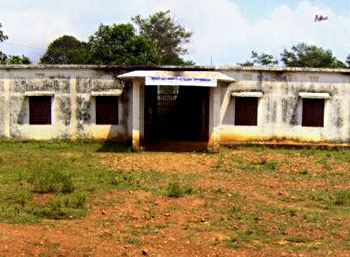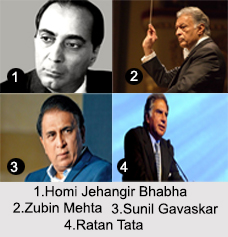The village headman headed administered the village. The village government was carried under the supervision of the village headman. He is also known as gramani. In northern India he was called garmika in northern India and mununda in the eastern India, pattakila in Maharashtra, gavunda in Karnataka and mahattaka or Karnataka. There was only one headman for each village. His post was hereditary. Government had the right to nominate another scion of the family if the succession of the son was not approved. He usually belonged to a non Brahmin caste. He was the leader of the village armed force and may have often belonged to the Kshatriya caste.
Headman`s order was represented on the council of ratnins in the Vedic period and he appears almost like a village king. Defence of the village was the most important duty of the village headman. Life was more unsettled in ancient times and due to slow communications the help of the Central Government could not be expected at a crucial time. The villagers had to be self-reliant.
Collection of the government revenue was also an important duty of the village headman. He was the custodian of the necessary records. He carried out the work of collection in consultation with the village council. The headman was also the ex-officio president of village council. He was remunerated by rent-free land and also gets a number of petty dues in kind, which the villagers had to pay to the government. He was the most influential person in the village. He was keen to protect the interests of the people.
Village office had to keep records of rights and transfers of the village lands, as well as papers connected with the government dues and their realisation. They had to coordinate with the district authorities and central government and the decisions and resolutions of the village council had to be recorded accordingly. This work was entrusted to village accountant. His post was also hereditary. There is clear evidence to show that they included all the village householders. Village assemblies were held in order to settle important matters.
As per jatakas both village headman and accountant were guided in the administration by the opinion of the village public. As per jatakas villages transacted their business among themselves. They do not prove themselves to any regular council or standing committee.
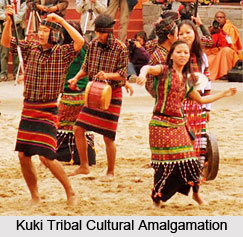 Village administration of Kuki tribe represents a traditional social structure which revolves around a chief, deputy chief and council of ministers that bear the authority of administration. While the Upa is primarily responsible for the rules and regulations of the land he runs the administration with the help of his council of ministers. Along with the Upa and Naopa, the village administration includes the Priest, Blacksmith and the Village Labour Corps who play significant role in the village life of Kuki tribes.
Village administration of Kuki tribe represents a traditional social structure which revolves around a chief, deputy chief and council of ministers that bear the authority of administration. While the Upa is primarily responsible for the rules and regulations of the land he runs the administration with the help of his council of ministers. Along with the Upa and Naopa, the village administration includes the Priest, Blacksmith and the Village Labour Corps who play significant role in the village life of Kuki tribes.
Village administration of Kuki tribe mainly revolves round the office of Chieftan which is also known as Haosa. This office is primarily responsible for running the daily administration of the village; provides security to the village people while protecting their economic interest. Basically the village administration includes administration of justice, enforcement of executive function, maintenance of social practices and customary laws including the religious performances. These are the basic responsibilities of the chief or the Upa of the tribe in which he is assisted by the Naopa or the secretary as well as the council of ministers. Along with these another very important person is the village priest or the Thiempu who is responsible for both religious practices as well as public health. In a literary sense a Thiempu is a person who shall have complete knowledge not only regarding the rituals and religious practices of the soil but also regarding medicines which requires complete knowledge about the secrets of medicine. The Theimpu is one of the most important persons of a Kuki tribe who shall attend to all the villagers at times of sickness and shall perform all the social rituals of the land. As such because of his knowledge and experience he is raised to such honours that sometimes he takes precedence over the Hoase. Overall the Thiempu along with the Upa and Naopa form the core of village administration of Kuki tribes.
Village administration of Kuki tribe also includes the Blacksmiths and the village labour corps who contribute in their way. A blacksmith is very important for agro based village communities as they manufacture all the equipments which are required for cultivation like the spades, hoes, axes etc. They are also responsible for manufacturing the weapons which are required for the personal security of the community. This includes weapons like swords, arrows, guns and bullets which are used by the tribal people of kuki community. For his services the blacksmith is offered a share of meat along with changseo which shall be lesser than the share of the Thiempu or Haosa. Overall the blacksmith too plays an important role in village administration. Along with a blacksmith the village labour corpse also play a significant role who is often known as Lawm shall be responsible for supervising the economic life of the villagers. The word Lawm literally refers to an informal labour organisation that is visible in the simple and corporate village life of the kuki tribes in which all the able girls and boys, men and women participate. There are four types of lawm organisations in the Kuki tribe which divides its members according to their age group.
Lawmpi
This includes the grown up boys and girls. This also includes the newly married boys who join the organisation till they find themselves unfit for participating in the Lawm. Lawm-Lai is the second type of Lawm organisation which includes the junior boys and girkls who are unmarried and whose brothers and sisters are members of lawmpi. Lawm-Neo is the third type of Lawm organisation that is formed by the third brothers and sisters of a family along with other teenagers. This followed by Lawm-Changpah which is the last type of Lawm organisation. This include those types of people whose services are not so much required in the house and should have some experience in cultivating the field. This is mainly a training group. Along with this the village administration also includes the group of Sawm who are a bachelor group of boys living in the dormitory. This group largely includes the able and fit bachelor boys.
Thus the village administration depends on these formal as well as informal groups for its local administration which add to the annual income of the Kuki tribe. The village administration in Kuki tribes also represents high judicial system which is largely seen in the rules for marriages. Overall this tribe has organised itself with separate legal and social system.





